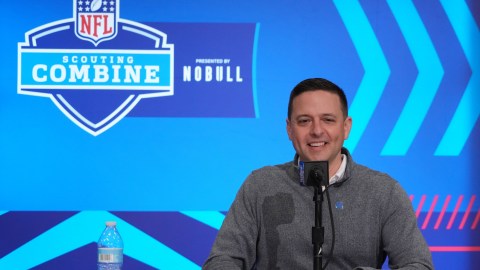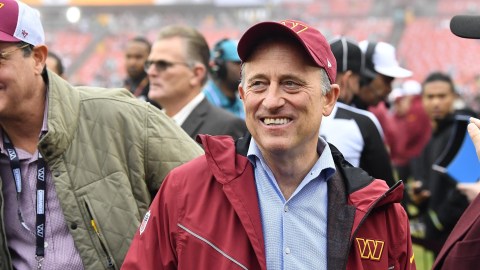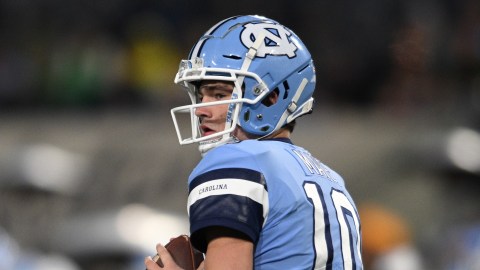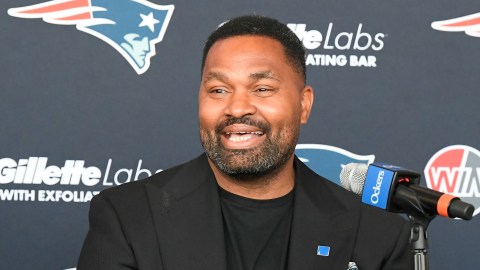If EA Sports ever asks Tom Brady, Randy Moss or another Patriots player to be on a Madden NFL cover, they should politely decline.
The money that can be made — reportedly $100K to $200K — isn’t worth the risk of being victimized by the Madden curse. Proving a curse exists is about as easy as proving the existence of Bigfoot, but the mounting evidence is hard to deny. Since players began gracing the cover of the video game, strange things have happened.
1989-2000: John Madden is featured on the cover, and the Hall of Fame coach never misses a start in the broadcast booth.
1999: Garrison Hearst is the guinea pig — the first player to have his number called for a cover. The running back appears on one version of the Madden NFL 99 iteration, while Madden appears on the other. Hearst has a career year in 1998 but breaks his ankle on the first play of the 49ers’ playoff game against the Falcons. San Francisco goes on to lose, and Hearst doesn’t play again until 2001.
2000: Barry Sanders shares the cover with Madden. The Hall of Fame back retires before training camp in 1999.
Dorsey Levens is featured on the European PAL edition. He rushes for more than 1,000 yards in 1999 but never collects more than 411 yards in the last five years of his career.
2001: Eddie George makes the cover. The Titans’ running back enjoys a career year in 2000, but his bobbled pass in a playoff game against the Ravens leads to a Ray Lewis interception, which Lewis takes to the house for the eventual game-winning touchdown. The following season, George rushes for a career-low 939 yards and never averages more than 3.4 yards per carry the rest of his career.
2002: Daunte Culpepper gets the nod. Culpepper leads the Vikings to a 4-7 record before his season ends with a knee injury.
2003: Marshall Faulk is the star. Faulk suffers an ankle injury in 2002 and finishes with 953 yards rushing, the first time in five seasons he doesn’t reach the 1,000-yard plateau. It’s a number he never hits again.
2004: Michael Vick, the leading candidate to become the face of the NFL, is the face of game. The Falcons’ signal-caller fractures his right fibula in a 2003 exhibition and plays in only five regular-season contests.
2005: Ray Lewis is on the cover. After recording at least one interception in each of his first eight season (20 total), Lewis finishes without a pick in 2004. His 2005 season is cut short with a hamstring injury in Week 6 that requires surgery.
2006: Donovan McNabb gets top billing. He suffers a sports hernia in his first game of the 2005 season, and his season-long feud with Terrell Owens divides the Eagles.
2007: Shaun Alexander is featured. The NFL’s reigning MVP breaks his left foot in Week 3 of the 2006 campaign and is never the same running back again.
2008: Vince Young stands tall on the cover but falls on the gridiron. The second-year quarterback throws 17 interceptions to nine touchdowns in 2007. The following year, Young hurts his knee in the first game of the season and loses his starting job to Kerry Collins.
2009: Brett Favre isn’t too old to promote. Despite wearing a Jets uniform in real life, Favre sports a Packers jersey on the cover. While his 2008 season in New York gets off to a promising start, the Jets miss the playoffs, and Favre later admits he played much of the year with an arm injury that required offseason surgery.
2010: Troy Polamalu and Larry Fitzgerald are the first dynamic duo in Madden history. Polamalu hurts his knee in the NFL’s season opener and is expected to be sidelined three to six weeks. Fitzgerald avoids injury in Week 1, but the Cardinals lose to the 49ers. Now Sportsbook.com is considering placing odds on when Fitzgerald will go down.
The NFL is a tough game. Anything can happen, but that’s a lot of misfortune to chalk up to coincidence.
The Madden curse is a long way from rivaling the 86 years of misery the Red Sox endured. However, if this NFL trend continues, EA Sports might have to change its marketing pitch: It’s in the game — but your favorite players won’t be.
Either that, or consult the 2004 Red Sox. They know a little bit about breaking a bad spell.



